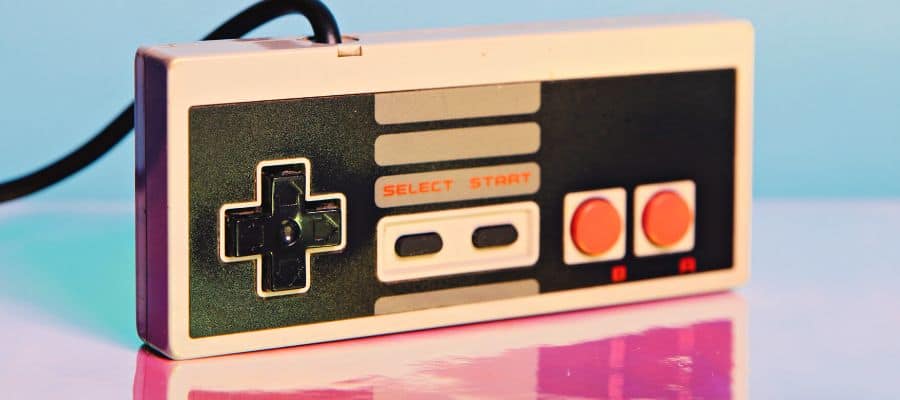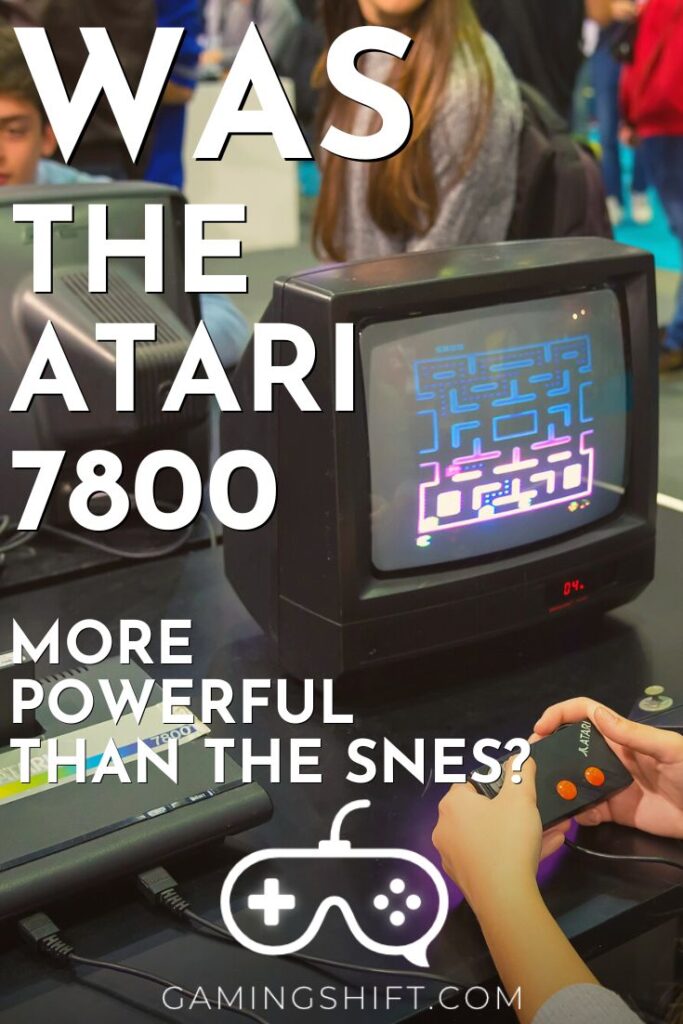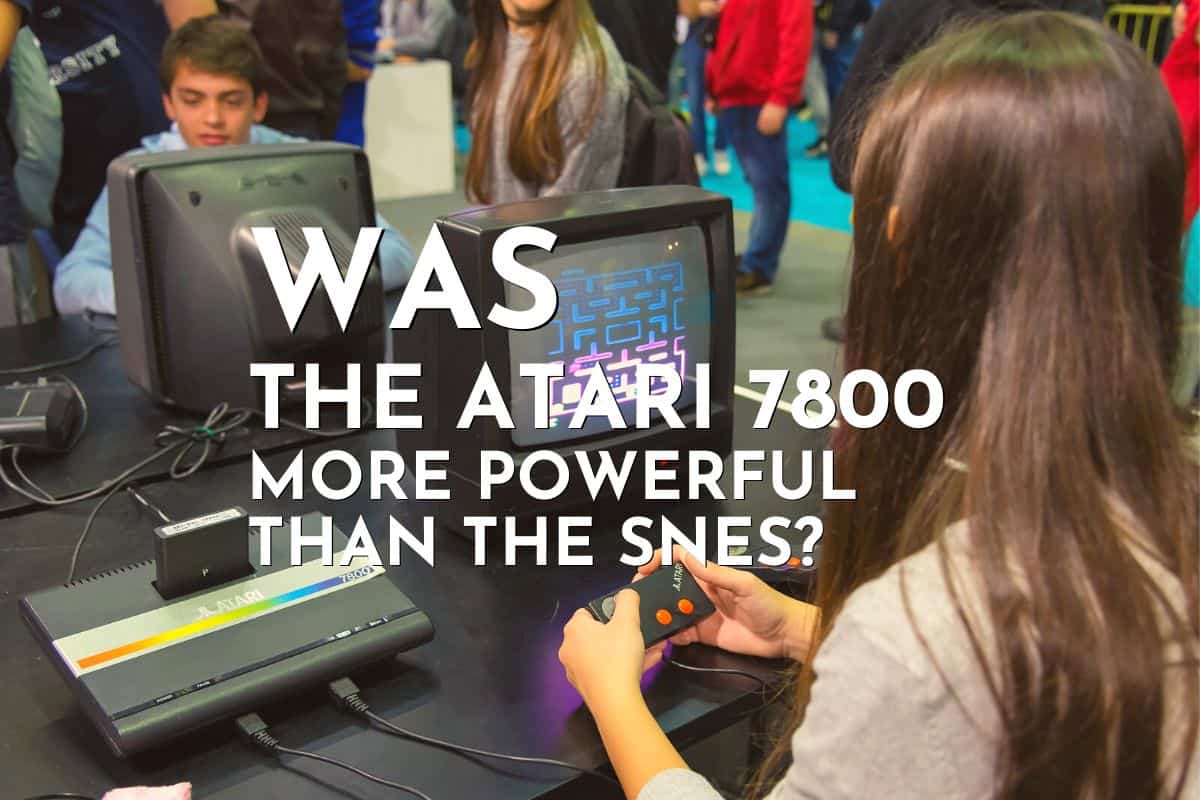Atari’s first three consoles were all 8-bit machines, but each made incremental upgrades over the previous one. The Atari 2600 was revolutionary with its ability to accept game cartridges and detachable controllers. With the 5200 and 7800, Atari made generation improvements in performance, adding graphical capabilities while expanding on game size and complexity.
Was the Atari 7800 more powerful than the SNES? No, as the SNES is a 16-bit console released 4 years after the Atari 7800 with more advanced hardware. Its processor and graphics unit are faster, plus SNES has an 8-channel sound chip that can generate programmable music of much higher quality than the 7800.
All things considered, the 7800 wasn’t too bad for its time. It was released nearly one year after the NES in North America and had a similar level of graphics. What killed the Atari 7800 was its tiny library of 59 games, none of which could compete against the blockbusters being released by Nintendo.
Was The Atari 7800 More Powerful Than The SNES?

Atari never designed the 7800 to compete against SNES, because there was no such thing when this console was made. Its biggest rival was the NES, another 8-bit console. While the Atari 7800 uses a MOS 6502-based chip just like SNES, the implementation of this processor in Nintendo’s console is far more advanced.
Nintendo uses the Ricoh 5A22, a license-produced copy of the WDC 65C816 (which itself is derived from the MOS 6502). While not a “true” 16-bit system, the 5A22 can switch between 8-bit and 16-bit registers. The same instruction can be interpreted differently depending on which mode the CPU is in.
In comparison, the 6502 in Atari’s 7800 operates on 8-bit instructions alone. In addition to the switchable register modes, the 5A22 also has 24-bit memory addressing and a DMA unit. It also has multiplication and division registers that aren’t present in the regular 6502.
And the advancements don’t stop there. SNES has a superior graphics processor, with more VRAM. This allows it to display advanced graphical effects, larger sprites, more colors, etc. at a higher resolution than the Atari 7800.
In terms of power, Atari’s 7800 is comparable to NES with each console having its pros and cons. NES was better at scrolling backgrounds, while 7800 had a higher resolution. Atari designed the 7800 as an “arcade at home” experience, while Nintendo created NES specifically for home gaming.
How Many Bits Was Atari 7800?
Atari 7800 is an 8-bit console, which means its processor can compute “words” that are 8 bits long with each cycle. A bit is the smallest unit of data in digital computing, representing either a 0 or 1 (binary). With its 16-bit processor, the SNES can handle larger chunks of data per clock cycle compared to 7800.
Is The NES More Powerful Than The Atari 2600?

Yes, it uses a faster version of the MOS 6502 with more pins and additional commands. The NES processor is also clocked faster- 1.79MHz vs 1.19MHz for the Atari 2600. In addition to a faster CPU, NES also enjoyed the advantage of having more memory- 2KB vs 128 bytes.
NES can also produce a sharper image because it uses composite cables instead of RF. And finally, NES has superior audio quality compared to Atari’s 2600. It’s a generational leap in technology (which makes sense, as it came 6 years after the Atari 2600).
How Much RAM Did The Atari Have?
Just 128 bytes of memory, which meant that developers had to optimize their code down to each line. RAM was quite expensive back in the 1970s, and Atari needed an affordable console. They couldn’t have managed a launch price of $189 if they decided to put more RAM in 2600.
Even the processor is a simplified version of the MOS 6502. It has fewer pins, resulting in a cheaper package. Oh, and this one’s going to surprise you- the Atari 2600 has no frame buffer, it just applies sprites and backgrounds to each individual scan line.
Is Atari Jaguar More Powerful Than PS1?

No, the Jaguar is weaker compared to Sony’s PS1. It uses two custom RISC processors called Tom & Jerry, in addition to a Motorola 68000. The company advertised this console as the world’s first 64-bit game system, but in reality, it just uses a 64-bit blitter bus (the custom RISC processors are both 32-bit).
Compared to SNES and Genesis, Jaguar delivers a big leap in performance. It can manage exceptional 2D graphics, nearing arcade quality. But when it comes to 3D, the PS1 pulls ahead quite comfortably (didn’t help that the Jaguar also had a mediocre game library).
What Was The Biggest Atari Game Flop?
It has to be E.T. the Extra-Terrestrial, which was based on the Stephen Spielberg movie of the same name. Atari massively overestimated how many customers this game would draw, and ended up with hundreds of thousands of excess cartridges. These cartridges were secretly buried in a New Mexico landfill so they wouldn’t take up storage space, which was costing Atari money.
In addition to being a commercial flop, E.T. was widely criticized for being one of the worst video games of its time. Atari officials would later confirm that they buried nearly 700,000 copies of this game in the landfill. An excavation team that was part of a documentary titled Atari: Game Over, visited this site in 2014 and uncovered the remains of several game cartridges.
Conclusion
I hope this article helped you judge the difference in power between Atari’s flagship 8-bit console and Nintendo’s first 16-bit console. Atari was a spent force by the late 1980s, and they kept stumbling into one bad product after another. Case in point- the Atari Jaguar was an overcomplicated and uninspired hunk of plastic that couldn’t even outsell the 16-bit consoles it was supposed to replace.
If you found this article useful, you may want to save this pin below to your Gaming board.


